Revitalizing a ‘lost art’: How young Sikhs are reconnecting with music, changing religious practice
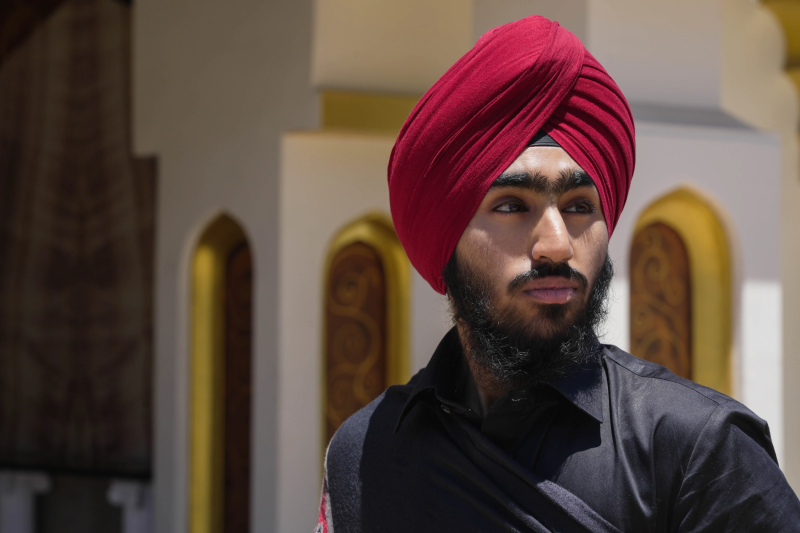
Makheer Singh stood in front of the Darbar hall of a Sikh worship center in Southern California this summer − packed with several hundred people waiting for the teenager to play the taus.
As he played the notes of the instrument which dates back to the 1800s, Singh says he felt closer to his heritage and his religion. The 20-minute performance of an instrument that few people know of, and even fewer play, demonstrated how young Sikhs are revitalizing their music and transforming how the next generation will practice their religion.
“I’m trying to get this younger generation to start picking up these instruments,” Singh said. “It’s becoming a lost art. I’m trying to bring it back to life.”
Many Sikhs no longer play the taus, a large instrument with 18 strings shaped like a peacock that can be difficult to learn. The taus was replaced by many for the smaller and more portable dilruba, both niche string instruments within the massively popular music group of Indian classical music. They are important to Sikhs as two of their gurus played them, and some credit them both with creating the instruments.
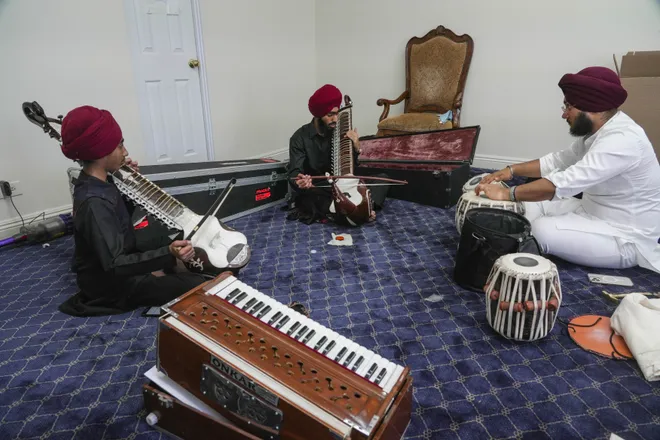
Singh had played the dilruba and taus since he was 10. For the first few years, it was a friendly competition between Singh and his father. When his high school closed during COVID lockdowns, Singh spent his time trying to learn the roots of the music he had listened to his whole life, Sikh religious ragas.
Sikh religious scripture are written in ragas - a collection of notes and pitches meant to emote certain feelings. Each raga has specific religious meanings in the Sikh scripture.
“Whenever I felt lonely I just sort of utilized it as an escape from reality,” Singh said. “That’s what motivated me to now practice on my own, do things on my own.”
As his passion for the music and the instruments grew, he found that few still taught these centuries-old traditions. If he wanted the next generation of Sikhs to enjoy the music, he would need to be the one to teach it.
Now 18 and living in Pasadena, he makes a a four-hour roundtrip drive weekly to teach 50 students in Riverside, California.
Simardeep Singh is a student at the University of Southern California studying Computational Neuroscience and Biomedical Engineering. In his free time, he also plays the dilruba. He is not related to Makheer.
Simardeep Singh learned to play from teachers in the U.S. and India, often online.
His dorm room is his practice studio. Beside his bed stands his piano, where he can check the pitch of notes against a gentle hum his computer emits. The hum helps him stay on cue, as he sits on his bed practicing the sarangi.
Simardeep Singh was determined to train on the sarangi (a bowed instrument similar to the dilruba) and dilruba, two instruments rarely used even in Indian classical spaces, because of the importance to his Sikh faith.
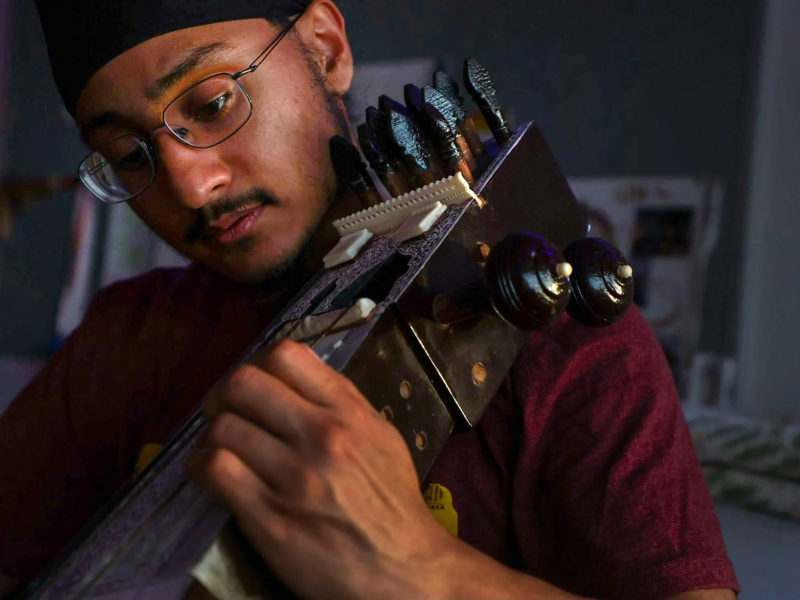
Sikh religious scripture are written in ragas - a collection of notes and pitches meant to emote certain feelings. Each raga has specific religious meanings in the Sikh scripture.
“If we can’t preserve the music that is behind (the scripture) how are we going to preserve the text?” Makheer Singh said.
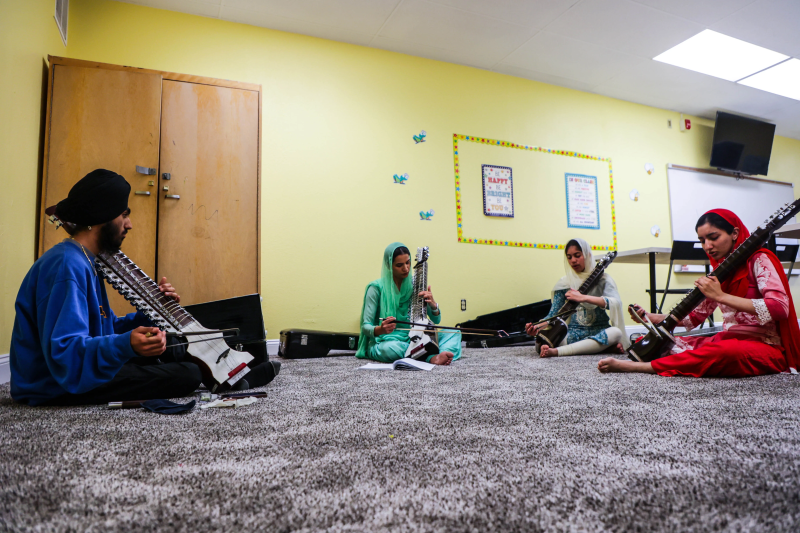
Raspereet Kaur, 19, is a student in Makheer Singh’s Friday advanced class at the Khalsa School, which serves all ages, teaching topics from Sikh history to the dilruba. Students leave their shoes outside the doors and sit in classrooms lined with a silky soft carpet that spreads underneath the desks and white fluorescent lights.
She has been learning to play the dilruba for about a year and a half after seeing Makheer Singh play at local events.
Kaur uses these lessons and her nearly daily practice on the dilruba to connect with her faith.
“It’s a really big honor to learn from someone that is so well known,” Kaur said, “getting to learn from the best basically.”
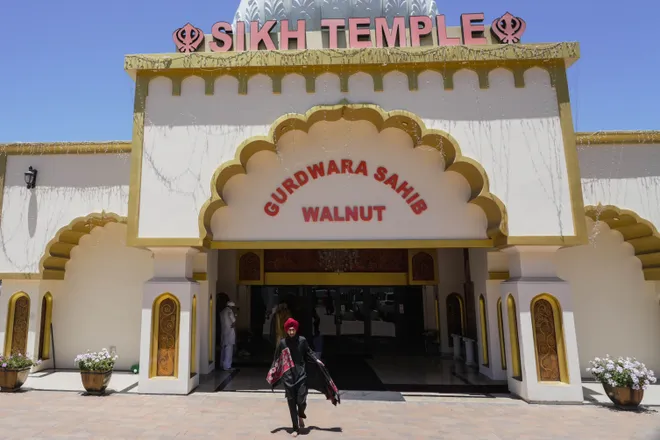
Makheer Singh plans to continue teaching and attend UCLA in the fall, looking forward to a career in the music industry. He already publishes music mixing traditional ragas with contemporary styles.
On Spotify Makheer Singh has over 400 monthly listeners and hosts tracks such as Caliginosity and Kolorful, where he mixes traditional Indian classical music with contemporary lo-fi electronic beats.
“What I do with this music with these ragas I layer on top of hip-hop, R&B music, and I release them − so it tracks this younger generation,” he said. “This community is so important to me and this is just my little way of giving back to it.”
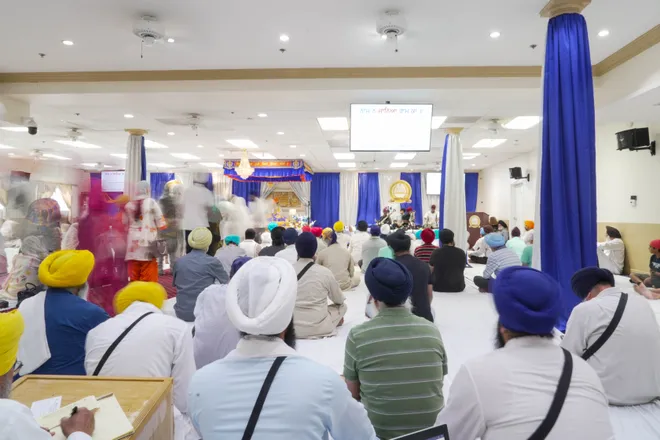
Disclaimer: The copyright of this article belongs to the original author. Reposting this article is solely for the purpose of information dissemination and does not constitute any investment advice. If there is any infringement, please contact us immediately. We will make corrections or deletions as necessary. Thank you.







